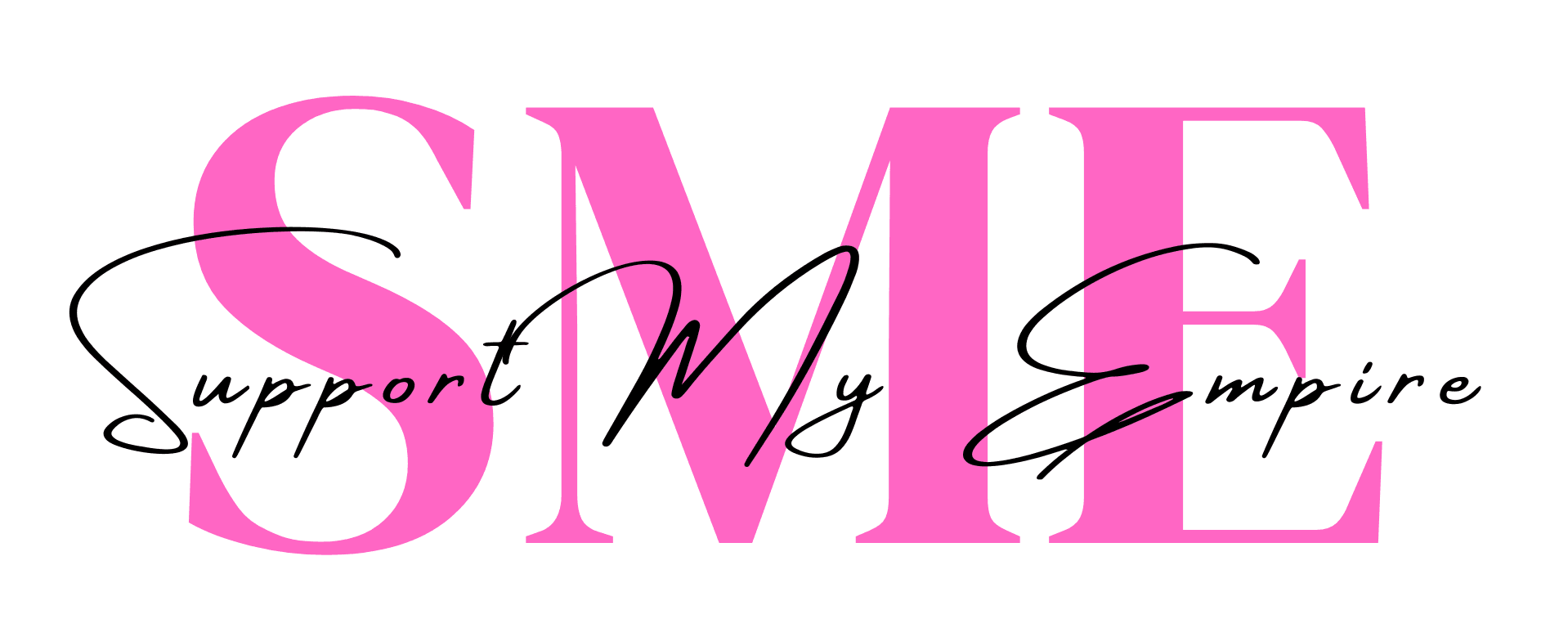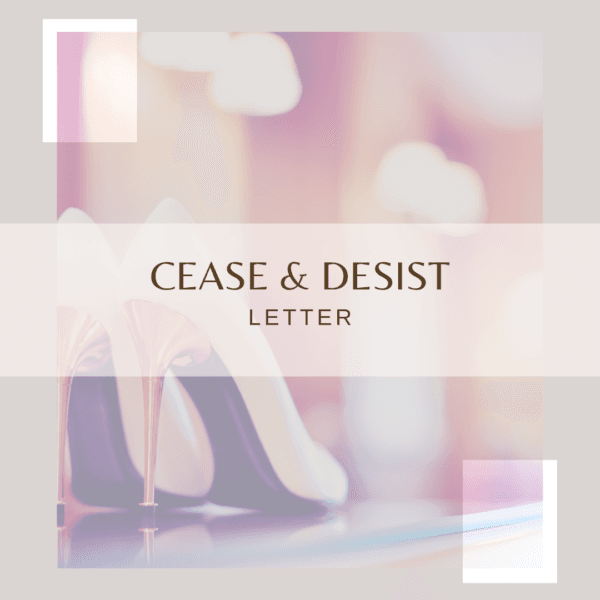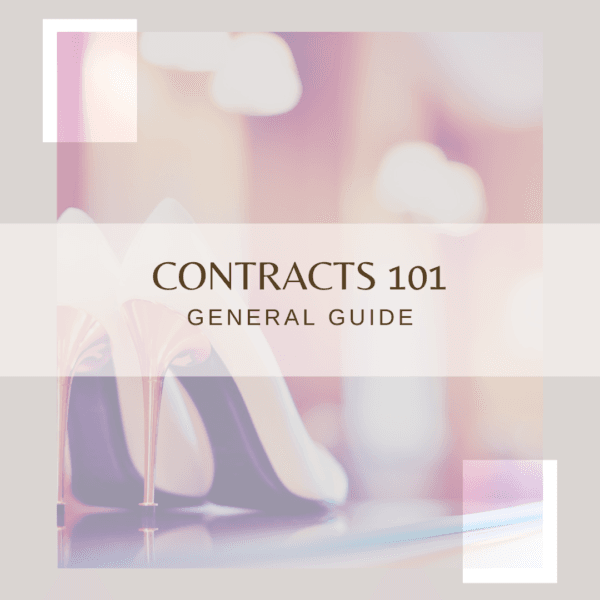To Trademark or Not to Trademark
As a small business owner, you’ve put your heart and soul into building your brand. You’ve invested time, money, and endless effort into creating a unique identity for your products or services. One way to protect this hard-earned brand identity is by trademarking it. But should you? In this blog, we’ll explore the pros and cons of trademarking your business, in plain and relatable terms, so you can make an informed decision.
Choosing whether to trademark your business involves considering both the advantages and challenges. On the bright side, getting a trademark gives you exclusive rights to your brand, keeping others from using similar marks in your industry. It’s like a legal superhero cape, boosting your brand’s credibility and warding off potential imitators. But, of course, there’s a catch. The process comes with its own hurdles, from upfront costs to paperwork and ongoing maintenance. We’re here to break down these aspects, making it simpler for you to navigate and decide what’s best for your business.

Positives of Trademarking Your Brand
Legal Protection
When you trademark your business, you’re essentially constructing a robust legal fortress to shield your brand from potential threats. This fortress extends protection to key elements like your brand name, logo, or slogan, acting as a powerful deterrent against imitators. Here’s how this legal shield works:
- Preventing Confusion: Trademarking grants you exclusive rights to the specific elements of your brand identity. This exclusivity is a game-changer in preventing others from adopting a name or logo that could create confusion among consumers. By securing these exclusive rights, you ensure that your customers won’t be misled or deceived by similar branding used by competitors.
- Deterring Imitators: The legal protection provided by a trademark serves as a formidable deterrent against imitators. Potential copycats are less likely to risk legal consequences by adopting a brand name or logo that closely resembles yours. This proactive defense helps maintain the uniqueness and distinctiveness of your brand in the marketplace.
- Preserving Brand Integrity: Your brand is more than just a name or a logo; it’s an embodiment of your values, quality, and promises to customers. Trademarking not only shields against confusion but also safeguards the integrity of your brand. This ensures that your business continues to be associated with the qualities and values that set it apart.
- Consumer Trust: A clear and legally protected brand identity instills confidence in consumers. When customers can trust that your brand is the authentic source of products or services, it strengthens their loyalty. This trust becomes a valuable asset in building long-lasting relationships with your audience.
In essence, legal protection through trademarking goes beyond just securing a name or logo; it’s about creating a lasting and trustworthy impression in the minds of your customers, fortifying the foundation upon which your business stands.
Brand Recognition
A registered trademark serves as more than just a legal stamp; it becomes a pivotal trust badge for your brand, elevating your presence in the competitive landscape. Here’s why brand recognition through trademarking is a powerful asset:
- Credibility Amplified: Picture a registered trademark as a seal of authenticity. When customers see that ® symbol associated with your brand, it signals that your business has undergone the legal process of trademark registration. This not only enhances your credibility but also communicates to consumers that your brand is serious, committed, and trustworthy.
- Memorability in a Glance: In a world inundated with choices, being memorable is key. A registered trademark turns your brand into a visual anchor in the minds of consumers. The unique combination of colors, shapes, and words protected by the trademark instantly registers with customers, making your brand more memorable amid the sea of alternatives.
- Trust in Familiarity: Familiarity breeds trust. A registered trademark fosters a sense of familiarity, and in turn, trust, among consumers. When people encounter your brand repeatedly, especially with the added assurance of legal protection, they are more likely to choose your products or services over unfamiliar or less-protected alternatives.
- Standing Out in the Crowd: In a crowded marketplace, differentiation is a challenge. A registered trademark is your beacon of distinctiveness. It sets your brand apart, not just for what you offer, but for the commitment to safeguarding your identity. This differentiation becomes a strategic advantage, helping your brand shine in the eyes of consumers.
- Consistency in Perception: A registered trademark ensures consistency in how your brand is presented across various touchpoints. Consistency in branding builds a coherent and unified image, reinforcing the qualities and values associated with your business. This, in turn, contributes to a more positive and enduring perception among consumers.
In essence, brand recognition through trademarking is a multifaceted tool that goes beyond mere visibility. It’s about establishing a lasting connection with your audience, building a reputation based on trust, and creating a distinctive identity that resonates in the minds of consumers.
upon which your business stands.
Asset Value
Beyond its legal implications, a trademark emerges as a valuable intangible asset, contributing significantly to the overall worth of your business. Here’s why a registered trademark is more than just a protective measure—it’s an investment that pays dividends, especially in scenarios like selling your business:
- Intangible Yet Tangible Value: Trademarks fall into the category of intangible assets because you can’t physically touch or hold them. However, their impact on your business is undeniably tangible. Think of your trademark as a unique identifier, representing the accumulated goodwill, reputation, and customer loyalty associated with your brand. This intangible value can be a substantial factor in determining the attractiveness of your business to potential buyers.
- Marketplace Distinction: In a marketplace saturated with options, having a registered trademark sets your business apart. It signifies a level of commitment to brand identity that resonates with consumers. For potential buyers, this distinctiveness can be a strategic advantage, offering a ready-made presence in the market and a foundation upon which to build and expand.
- Consumer Trust as an Asset: Trust is a valuable currency in business transactions. A registered trademark serves as a testament to the trust your brand has garnered over time. For a potential buyer, acquiring a business with an established and trusted brand can significantly reduce the risk associated with the transition, making your business a more appealing investment.
- Leveraging Licensing Opportunities: A registered trademark opens the door to potential licensing opportunities. Licensing allows other businesses to use your brand in specific ways, generating additional revenue streams. The ability to license your trademark can enhance the perceived value of your business, as it demonstrates the versatility and marketability of your brand beyond its core products or services.
- Mitigating Risks for Buyers: From a buyer’s perspective, acquiring a business with a registered trademark provides a level of security. The legal protection afforded by the trademark minimizes the risk of future disputes over brand identity. This assurance can be a decisive factor for buyers evaluating various investment opportunities.
- Brand Legacy and Recognition: A trademark encapsulates the legacy and recognition your brand has built. For a potential buyer, this legacy represents a valuable asset with a built-in customer base, history, and story. It becomes a foundation upon which the buyer can continue to build and evolve the brand.
In essence, a registered trademark is not just a protective measure; it’s a strategic investment that can significantly enhance the perceived value of your business. Whether you’re considering a future sale or aiming to strengthen your position in the market, the intangible assets associated with your trademark play a pivotal role in shaping the overall worth of your business.
stands.
Nationwide Protection
The significance of trademark registration extends far beyond the immediate act of securing your brand identity. Once your trademark is officially registered with the Trademark Office of the country where you intend to trade, a powerful shield of nationwide protection is unfurled. This protection is not merely a legal formality; it becomes a cornerstone for the strategic expansion of your business. Here’s why nationwide protection is a crucial asset, especially for those eyeing growth beyond local markets:
- Geographic Reach Amplified: A registered trademark transcends regional boundaries, offering you a passport for nationwide recognition. This means that as your business grows, your brand is not confined to a specific locality. Nationwide protection ensures that your trademark is recognized and safeguarded across the entire country where you operate. This amplification of geographic reach is indispensable for businesses with aspirations of national prominence.
- Consistency in Branding:When expanding into new markets, maintaining consistency in branding is paramount. A registered trademark acts as a beacon of uniformity, ensuring that your brand is presented consistently and cohesively across diverse regions. This consistency is not only aesthetically pleasing but also reinforces brand recall and recognition, essential elements for success in unfamiliar territories.
- Navigating Complex Markets: Every market comes with its own set of challenges and nuances. Nationwide protection equips your brand with a standardized level of legal defense, allowing you to navigate the complexities of diverse markets with confidence. It provides a sense of security, knowing that your brand is shielded from potential infringements or unauthorized usage, regardless of the regional intricacies.
- Facilitating Market Entry: For businesses eyeing entry into new territories, having a registered trademark simplifies the market entry process. It establishes your brand as a credible and recognized entity, streamlining negotiations, partnerships, and collaborations. This facilitation can be a decisive advantage in establishing a foothold in markets previously unexplored.
- Adaptability to Business Evolution: As your business evolves, so too might your target markets. Nationwide protection ensures that your brand is adaptable to these changes. Whether you decide to expand into additional regions or refine your focus, the registered trademark provides the flexibility needed to align your brand strategy with the evolving dynamics of your business.
- Competitive Edge in Expansion: In the realm of business expansion, having nationwide protection underpins your competitive edge. It not only safeguards your brand but also positions it as a force to be reckoned with. Potential competitors are less likely to encroach upon a market where your brand enjoys legal protection, giving you a strategic advantage in competitive landscapes.
In conclusion, trademark registration provides nationwide protection, empowering businesses to expand confidently, maintain brand consistency, and navigate complex markets. It’s essential for businesses aiming to expand their footprint and leave a lasting mark on a national scale.
Legal Recourse
A registered trademark is more than symbolic; it’s a powerful legal tool for taking decisive action against infringement. Here’s a closer look at the avenues of legal recourse available to you when someone infringes on your trademark:
- Cease and Desist Letters: The first line of defense often involves sending a cease and desist letter to the infringing party. This formal communication serves as a warning, notifying the other party of the trademark infringement and demanding that they cease using the conflicting mark immediately. Cease and desist letters are a powerful initial step, prompting many infringers to rectify the situation without escalating to more formal legal proceedings. (Purchase our Cease and Desist Letter here)
- Negotiating Settlements: In some cases, the infringing party may be willing to negotiate a settlement outside of court. This could involve discussions on modifying their branding, compensating for damages incurred, or other mutually agreeable terms. Negotiating settlements offers a cost-effective and quick way to resolve trademark disputes, avoiding lengthy legal battles.
- Alternative Dispute Resolution (ADR): Mediation and arbitration offer alternative ways to resolve trademark disputes without the need for court proceedings. These processes provide a collaborative and flexible approach, enabling parties to resolve disputes with help from a neutral third party.
- Filing Lawsuits: If cease and desist letters and negotiations prove ineffective, the next step is often filing a lawsuit in a court of law. A lawsuit asserts your legal rights and seeks remedies for the infringement, such as injunctive relief to stop the infringing activities, damages for any harm caused, and, in some cases, recovery of legal fees. Filing a lawsuit is a more formal and structured process, often requiring legal representation to navigate the complexities of the legal system.
- Injunctive Relief: In trademark infringement cases, obtaining injunctive relief is a critical objective. An injunction is a court order that prohibits the infringing party from using the contested mark. This is a powerful tool to swiftly halt any further damage to your brand and protect your exclusive rights.
- Monetary Damages: In the event that your brand has suffered financial losses due to the infringement, you may be entitled to monetary damages. These damages can encompass actual losses, such as lost profits, as well as statutory damages, which are predetermined amounts set by law and awarded in certain cases.
- Enforcement of Decisions: When a court issues a decision in your favor, it becomes essential to enforce that decision. This may involve ensuring that the infringing party complies with the court’s orders and takes the necessary actions to rectify the infringement. Enforcement mechanisms vary but may include further legal proceedings if compliance is not achieved willingly.
In summary, having a registered trademark provides you with a range of legal tools to protect your brand. From initial warnings to formal legal action, the ability to enforce your exclusive rights ensures that your brand maintains its integrity and remains shielded from unauthorized use by others.
Downside of Trademarking Your Brand
Time-Consuming
Embarking on the journey to trademark registration demands not just financial commitment but also an understanding of the temporal intricacies involved. Here’s a comprehensive look at the time-consuming nature of this crucial process:
- Application Review Period: The initial step involves the submission of your trademark application to the relevant government agency, marking the commencement of the review process. This stage alone can stretch over several months as examiners meticulously assess the application for compliance with legal requirements. The complexity of the application, the backlog of cases, and the specific procedures of the trademark office contribute to the variability in review timelines.
- Office Actions and Responses: It’s not uncommon for trademark applications to face challenges in the form of office actions. These are official notices from the trademark office pointing out issues or seeking additional information. Addressing these actions requires careful consideration and often involves a back-and-forth exchange with the trademark examiner. Each round of responses and reviews contributes to the elongation of the overall timeline.
- Publication and Opposition Period: After passing the examination, your application is publicly posted for a set time. During this period, third parties can oppose your trademark if they claim a conflict with their rights. The duration of this opposition period adds another layer to the time investment required for the registration process.
- Proactive Search: Before even initiating the official application, businesses are advised to conduct a comprehensive search to identify potential conflicts. This proactive step, while not mandatory, is time well spent in preventing complications later in the process. Ensuring that your proposed trademark doesn’t infringe on existing rights can save valuable time during the official examination.
- Complexity of Trademark Classifications: Trademarks cover specific goods or services, making it essential to understand their classifications. Accurate classification is legally required and crucial to avoid delays.
- Legal Expertise and Strategy: Engaging legal assistance, while beneficial, can introduce an additional layer of time. Crafting a strategic approach, responding to office actions, and navigating any potential legal challenges are processes that demand careful consideration. However, this investment in legal expertise can prove invaluable in expediting the overall timeline and minimizing the risk of setbacks.
- Overall Duration: The trademark registration process can extend over several months to even years, depending on various factors. You must spend time waiting for responses and actively managing challenges during the process.
Businesses must understand the timeline of trademark registration to set expectations, plan strategically, and navigate the process effectively. Investing time is essential for securing long-term exclusivity and protecting your brand, not just an obstacle to overcome.
Cost
Small business owners must carefully balance their budget when deciding whether to register a trademark. Here’s a closer look at the financial aspects to consider:
- Initial Filing Fees: The journey begins with the initial filing fees. This is often the first hurdle for businesses, especially those with limited financial resources. These fees cover the formal application process, where your trademark is officially submitted to the appropriate government agency for examination. While these fees can vary, they represent the upfront cost of securing legal protection for your brand.
- Ongoing Maintenance Costs: Beyond the initial filing, trademark registration incurs ongoing maintenance costs. To keep your trademark active and fully protected, periodic renewals, filings, and fees are necessary. These maintenance expenses are crucial aspects of preserving your exclusive rights to the trademark over time. It’s essential to factor these recurring costs into your budgetary considerations to ensure sustained protection.
- Legal Assistance Expenses: While not mandatory, seeking legal assistance during the registration process can be an additional cost. Many businesses seek legal guidance to simplify trademark law, ensuring their applications meet requirements and avoid challenges. Legal support can be particularly beneficial in avoiding costly mistakes that may lead to delays or complications.
- Search and Clearance Costs: Before officially filing for a trademark, conducting a thorough search to ensure that no conflicting trademarks already exist is a recommended practice. While this step may not always result in a direct financial cost, it’s worth considering the time and resources involved in this preliminary clearance process. Identifying potential conflicts early on can prevent costly disputes down the road.
- Potential for Opposition Proceedings: In some cases, after filing your trademark application, there may be opposition proceedings initiated by third parties who claim conflicting rights. While this doesn’t always happen, it’s a scenario to be prepared for. Responding to oppositions, if they arise, may involve additional legal fees and could potentially impact the overall cost of the registration process.
- Return on Investment (ROI): It’s essential to view the costs associated with trademark registration as an investment in the long-term success and protection of your brand. Consider the potential return on investment in terms of enhanced brand recognition, customer trust, and the ability to distinguish your products or services in the marketplace.
In conclusion, trademark registration costs can be challenging, but they’re an investment in your brand’s longevity and exclusivity. Small business owners can make informed decisions by balancing costs with budget and long-term goals.
Limited Protection
A registered trademark offers strong protection but is limited to specific classes of goods or services. Understanding the intricacies of this limitation is crucial for businesses seeking comprehensive brand protection. Here’s a comprehensive look at the concept of limited protection in trademark registration:
- Classes of Goods and Services: Trademarks are categorized into classes, each representing a distinct category of goods or services. The classification system is extensive, encompassing everything from apparel and technology to food and entertainment. When registering a trademark, you must specify the classes that accurately reflect the nature of your business activities. This specificity ensures that your protection is tailored to the areas directly relevant to your brand.
- Scope of Protection: The protection afforded by a registered trademark is confined to the classes you’ve selected during the application process. For example, if you’ve registered your trademark for “clothing,” your protection is limited to that specific category. This means that while you have exclusive rights to use the trademark in connection with clothing, someone else could potentially use the same or a similar mark for unrelated products, such as “food.”
- Potential for Conflicting Marks: The limitation in protection opens the door to the possibility of conflicting marks existing in other classes. Even if your trademark is distinctive and unique within your registered classes, there’s a chance that a similar or identical mark may be registered by another entity in a different class. This underscores the importance of conducting thorough searches not only within your specific class but also across relevant categories.
- Comprehensive Brand Strategy: Crafting a comprehensive brand strategy involves strategic thinking about potential expansions into different markets or product lines. If your business diversifies its offerings beyond the initially registered classes, there’s a need to revisit and potentially expand your trademark registrations to maintain a consistent and protected brand identity.
- Monitoring and Adaptation: Recognizing the limitations of protection prompts the need for vigilant monitoring. Regularly checking for potential conflicts or new trademark registrations, even in unrelated classes, allows you to stay proactive in safeguarding your brand. If a conflicting mark emerges, it provides an opportunity to assess potential risks and take appropriate action, such as opposing the registration or negotiating coexistence agreements.
- International Considerations: If your business operates internationally or has aspirations for global reach, understanding the trademark classes in different jurisdictions becomes paramount. The classification systems may vary, and a mark registered in one country for specific goods or services may not automatically grant protection in another jurisdiction.
- Strategic Portfolio Management: As your business evolves, so too should your trademark strategy. Strategic portfolio management involves periodically reassessing your brand’s protection needs, considering potential expansions into new markets or product categories, and adjusting your trademark registrations accordingly. This proactive approach ensures that your brand remains adequately protected amidst the dynamic landscape of commerce.
In essence, while trademarks offer robust protection, it’s crucial to appreciate the concept of limited protection within specific classes. This understanding empowers businesses to strategically navigate the trademark landscape, anticipate potential challenges, and proactively manage their brand identity across diverse categories of goods and services.
Maintenance
Registering a trademark is not a one-time endeavor; it demands ongoing attention and adherence to maintenance requirements to ensure the sustained protection of your brand. Here’s a comprehensive exploration of the maintenance aspect in trademark registration:
- Renewal Filings: Trademark registrations come with expiration dates, and to keep your protection intact, you must file renewal documents periodically. The frequency of these renewals varies by jurisdiction, but they typically occur every 10 years. Failing to file timely renewal documents can jeopardize the validity of your trademark, leaving it vulnerable to cancellation.
- Documentation Updates: Update any changes to your business name, address, or trademark ownership with the relevant trademark office promptly. Maintaining accurate and up-to-date information is not only a legal requirement but also essential for effective communication between the trademark office and the trademark owner.
- Declaration of Use: In some jurisdictions, trademark owners must submit declarations of use to confirm active commercial use. This serves as evidence that the trademark is fulfilling its intended purpose. Failure to provide these declarations may result in the cancellation or limitation of your trademark rights.
- Payment of Fees: Regular payments of maintenance fees are a fundamental aspect of keeping your trademark active. These fees contribute to the ongoing administrative and legal processes that uphold the integrity of the trademark system. Awareness of fee schedules, deadlines, and potential changes is crucial to avoid unintentional lapses.
- Monitoring for Deadlines: The responsibility for maintenance extends beyond the initial registration. Trademark owners must be vigilant in monitoring deadlines for renewal filings, fee payments, and other required submissions. Creating a system to track deadlines, using internal processes or trademark management software, is essential for compliance.
- Consequences of Non-Compliance: Failure to adhere to maintenance requirements can have severe consequences, including the cancellation of your trademark. Canceling a trademark forfeits its exclusive rights, leaving the brand vulnerable to unauthorized use. Reinstating a canceled trademark can be a complex and time-consuming process.
- Proactive Management for Longevity: Proactive trademark management goes beyond minimum requirements; it nurtures your brand’s longevity and strength. Regularly reviewing your trademarks, updating strategies, and adapting registrations strengthen your brand’s resilience and value.
- Global Considerations: For businesses with international operations or aspirations, understanding and complying with maintenance requirements in different jurisdictions is crucial. Each country may have its own set of rules and timelines, necessitating a tailored approach to global trademark portfolio management.
Maintaining a trademark is more than a legal obligation; it’s a strategic investment in your brand’s vitality. Proactive management keeps your trademark a strong asset, ready to endure market changes and the test of time.
Enforcement
The legal framework grants the right to enforce your trademark, but vigilance and action are your responsibility. Enforcing your trademark is not just a legal matter; it’s an ongoing commitment to safeguarding your brand integrity. Here’s a comprehensive look at the enforcement process:
- Active Monitoring: Enforcing your trademark begins with proactive monitoring. Regularly scouring the market, both online and offline, for potential infringements or unauthorized use of your trademark is essential. This active vigilance helps identify potential threats early on, allowing for timely and effective responses.
- Trademark Watch Services: Consider employing trademark watch services, which use advanced monitoring tools to track new trademark applications and registrations that may conflict with yours. These services enhance surveillance, promptly alerting you to potential infringements.
- Cease and Desist Letters: Identifying unauthorized trademark use often starts with sending a cease and desist letter. This formal communication demands the infringing party to stop using your trademark and may include details of potential legal consequences. Crafting an effective cease and desist letter requires legal precision and may benefit from the assistance of legal professionals.
- Negotiation and Settlement: Sometimes, a cease and desist letter leads to negotiation and settlement discussions. This could involve reaching an agreement with the infringing party, modifying their branding, or establishing coexistence terms. Negotiations require strategic finesse, and legal assistance can be invaluable in navigating these discussions.
- Alternative Dispute Resolution (ADR): Alternative dispute resolution methods, such as mediation or arbitration, provide alternatives to traditional litigation. These approaches can be less formal, more flexible, and potentially more cost-effective. Engaging in ADR requires assessing the situation carefully and a mutual willingness to seek non-adversarial resolutions.
- Litigation as a Last Resort: If all else fails, litigation may become necessary to protect your trademark rights. Filing a lawsuit asserts your legal claims and seeks remedies through the court system. Litigation often consumes time and resources, so businesses should consider it a last resort due to its complexities.
- Global Enforcement Challenges: For businesses with a global footprint, enforcing trademarks across borders introduces additional challenges. Varying legal systems, cultural nuances, and linguistic differences can complicate the enforcement process. Coordinating international enforcement efforts may necessitate collaboration with legal experts in each jurisdiction.
- Costs and Resource Allocation: Enforcement efforts incur costs, both in terms of legal expenses and the allocation of internal resources. Balancing the need for stringent enforcement with practical considerations, such as budget constraints, requires a strategic approach. It’s crucial to assess the potential impact of infringement on your brand and allocate resources accordingly.
- Educating Stakeholders: Beyond legal measures, educating stakeholders, including employees, distributors, and partners, about the importance of trademark protection is essential. Fostering a culture of awareness creates a network of brand advocates who help identify and address potential infringements.
In essence, trademark enforcement is a multifaceted endeavor that demands a strategic blend of vigilance, legal acumen, and resource allocation. It’s a continuous commitment to maintaining the exclusivity and distinctiveness of your brand in a dynamic and often challenging marketplace.
In conclusion, trademarking your business is a strategic investment in your brand’s longevity and exclusivity. Trademark registration provides comprehensive protection, including legal rights, brand recognition, asset value, nationwide reach, and the ability to defend your identity in the marketplace. While navigating the complexities of trademark registration may seem daunting, the benefits far outweigh the challenges. We specialize in brand protection and provide expert guidance to navigate the entire process with ease. Our experienced consultants help businesses of all sizes secure their brand identity. Protect your brand with confidence—contact us today to start your trademark journey and secure your business for lasting success.
Grow Your Retail Empire with Proven, Scalable Strategies
Discover three ways to elevate your business—choose the path that suits your goals best.
We’ll do the heavy lifting so you can focus on running your business.
You won’t be doing this alone; we’ll walk you through every step.
No Burpees, Just Flexing! Weekly Workouts for a Stronger Bottom Line.
Resources
The Retail Gym Your Weekly Business Workout
No sweat, just success! The Retail Gym is your weekly business workout designed to help you lift your retail strategies, tone your sales skills, and flex your competitive edge—without a single burpee.







